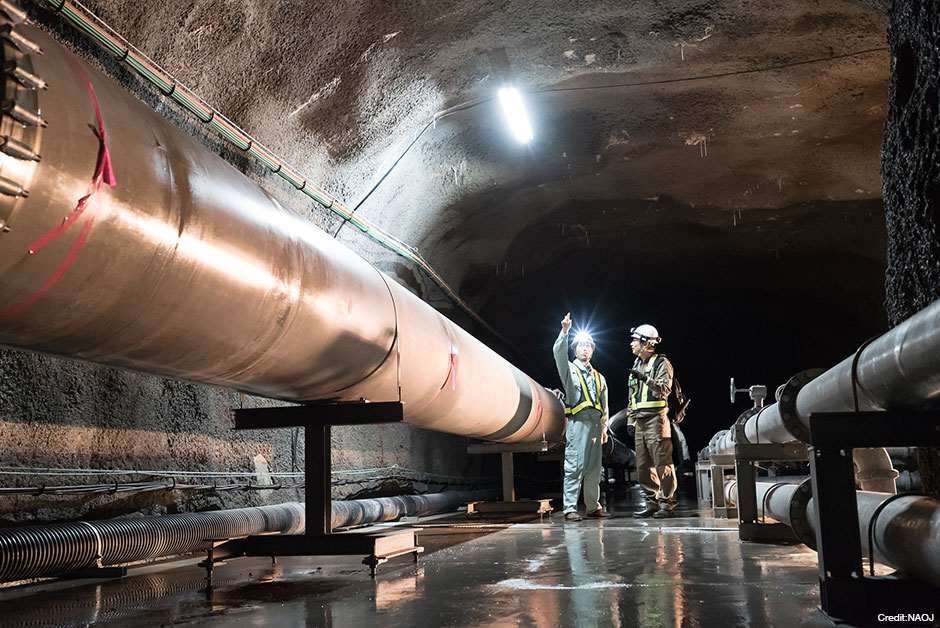Underground Instruments Waiting for Ripples in Space-Time
Photo・

Spacetime distortion caused by the motions of massive celestial objects propagates through the Universe as a wave. Gravitational waves based on general relativity opened a new window to detect celestial phenomena and observe the Universe. The era of gravitational wave astronomy has begun. NAOJ is also participating in the development of the Large-scale Cryogenic Gravitational Wave Telescope KAGRA. We aim to start cryogenic operation in fiscal year 2017. In tunnels drilled in the subterranean Kamioka Mine in Hida City, Gifu Prefecture, commissioning of the instruments is ongoing and they are waiting for the day when they will detect those space-time ripples.
Beginning of Gravitational Wave Astronomy
NAOJ is collaborating with the High Energy Accelerator Research Organization; the Institute for Cosmic Ray Research, University of Tokyo; and others to construct KAGRA which is a laser-interferometric gravitational-wave detector with a baseline length of 3 kilometers. When a gravitational wave arrives, the interference pattern of the light changes at the point where the laser light is divided into the two directions of the L-shape, with the expansion and contraction of spacetime. On the left side of this photo, the vacuum pipe, which extends throughout the underground tunnel, is one of these paths (Y-arm).
In February 2016, a report shook the world. The American LIGO (Laser Interferometer Gravitational-Wave Observatory) had directly detected gravitational waves for the first time. To this discovery which will go down in the history of physics, Dr. Raffaele Flaminio, the Director of the NAOJ Gravitational Wave Project Office, said, “This is not the end of the story, but just its beginning: the birth of gravitational wave astronomy.” LIGO detected gravitational waves emitted by the coalescence and merger of two black holes. With gravitational waves, we can observe extreme phenomena which cannot be seen by the electromagnetic waves that we have been using to observe the Universe until now.
A single laser-interferometric gravitational-wave detector itself cannot determine where in the Universe a gravitational wave came from. For that, multiple interferometers are needed. This year, the American led Advanced LIGO; the European Advanced Virgo; and KAGRA, which aims for high precision detection using unique Japanese technology, will cooperate in a worldwide gravitational wave observation strategy, so that we are about to enter the age of gravitational wave astronomy.
Text by: Seiichiro Naito (Public Relations Center, NAOJ)
Translation by: Hiroko Tsuzuki and Ramsey Lundock (Public Relations Center, NAOJ)
Image Data
| Date | February 27, 2017 |
|---|---|
| Photographer | Shogo Nagayama |
| Credit | National Astronomical Observatory of Japan |
Download
- Medium resolution (940 x 628, 167KB)
- High resolution (2000 x 1336, 2.0MB)
- Maximum resolution (4086 x 2729, 6.5MB)